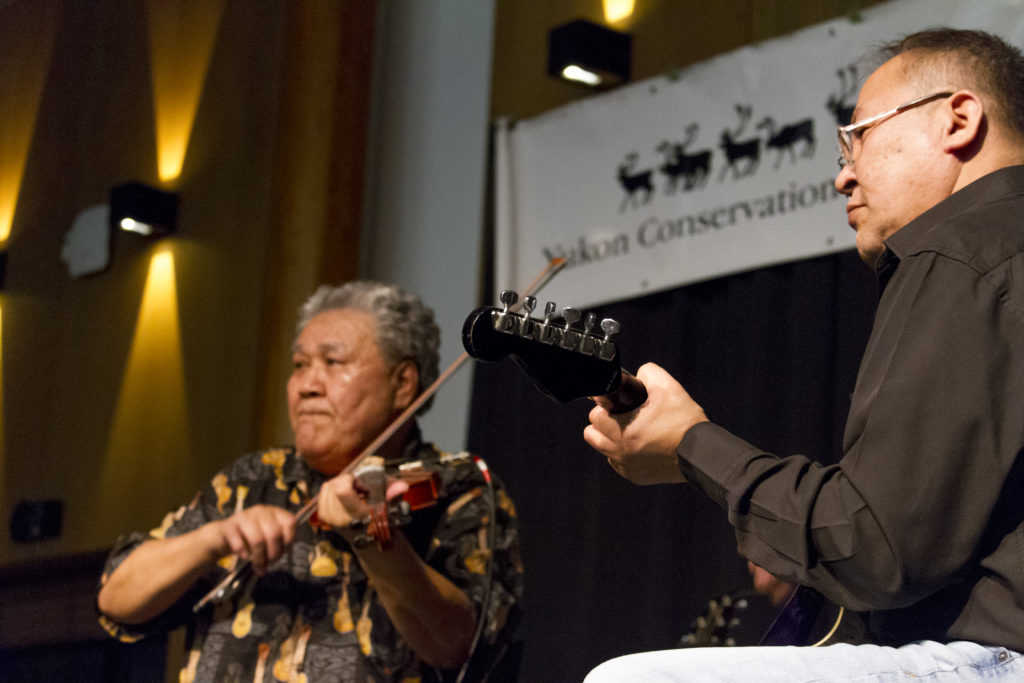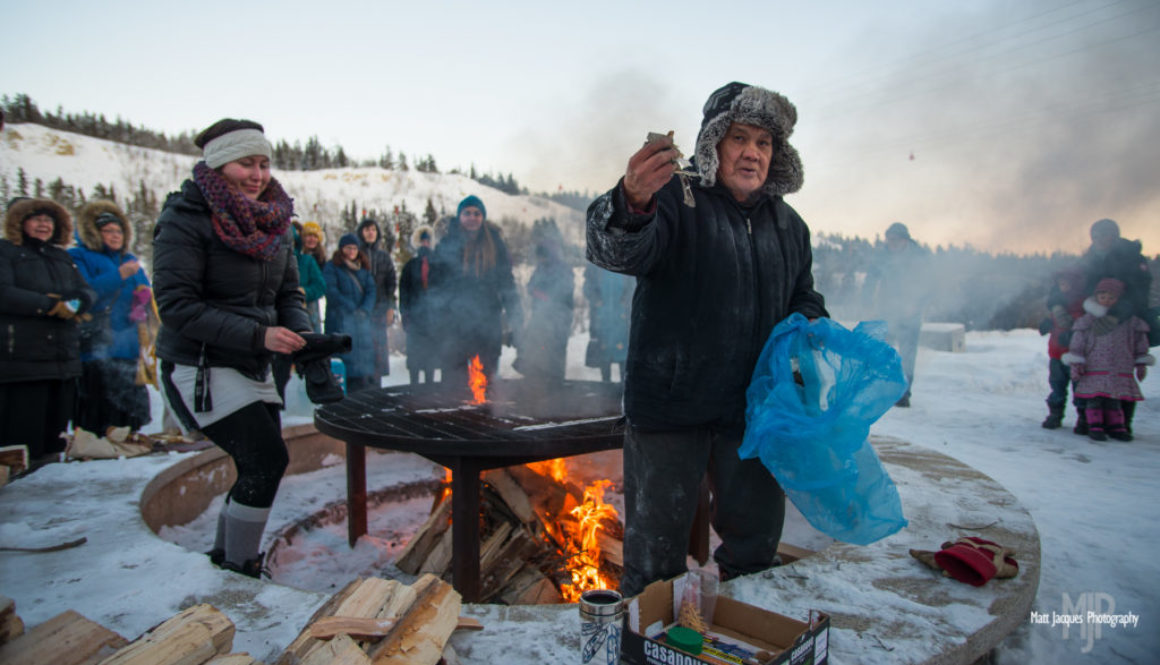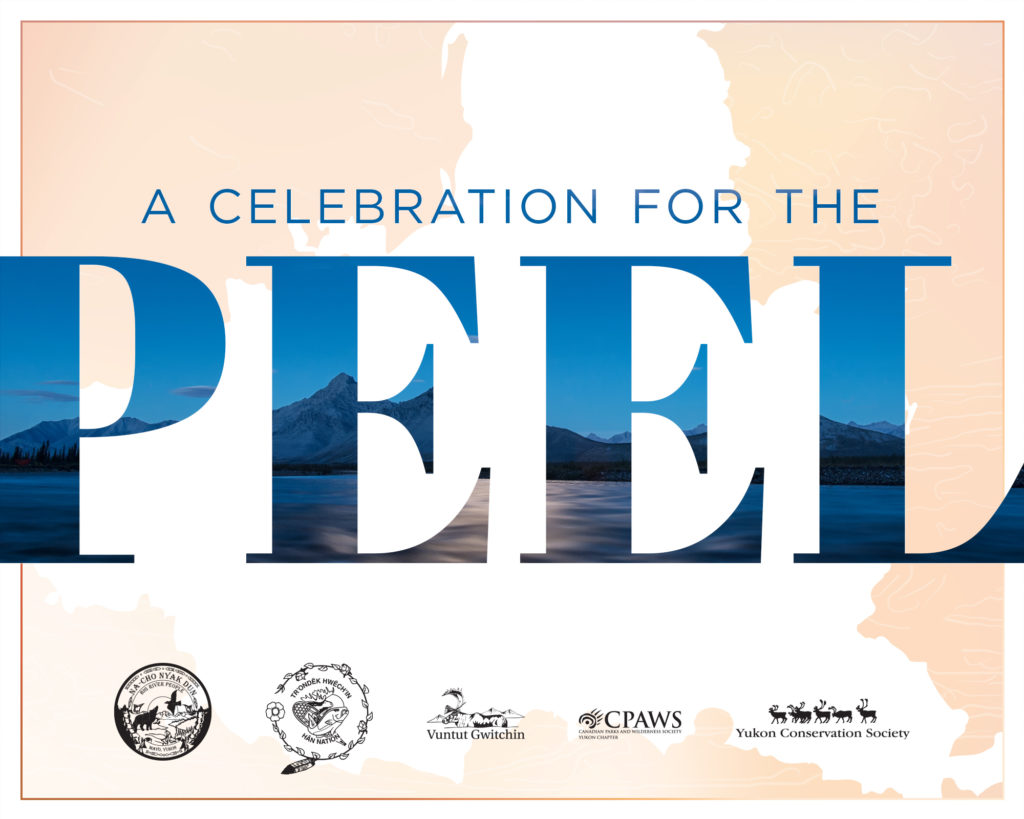We did this, together
We did this, together
At the Whitehorse Livestream of the Peel Supreme Court decision last December, when the news came through that we had— in a unanimous victory —won our court case, a couple things quickly became clear.
Yukoners were ready to celebrate. This is a massive victory for the Peel Watershed and First Nations rights, and it’s the result of decades of dedication from so many people. The other thing we noticed at the livestream was that people had stories to share about their connection the Peel; that although the land use planning process has been embroiled in the courts for the past three years, the Peel Watershed is so much more than politics. Everyone has a unique connection to this land. We knew that after many years of hard work, we had reached the moment where it was so important to come together and share our stories.
Unity
We couldn’t have achieved what we have achieved without unity. It was the first time in history that First Nations and environmental groups took a case all the way to the Supreme Court of Canada. But this was not the only reason for the success of this campaign. On a broader scale, success came from an entire territory rallying long and hard to protect this incredible watershed and modern treaties. If you were at any of the Peel events in the past few years you could see how people from all walks of life came out to support a campaign they so deeply believed in.
The success of the campaign came from a shared belief that wilderness — especially a tract of intact land the size of the Peel —is the most valuable asset we have; for now, for our grandchildren and for their grandchildren. Yukoners came together on this shared belief. And we won! It’s a success story that we hope will inspire other campaigns to know that they too can rise together. They too can protect some of the world’s most unique and vulnerable wild spaces.
Even Tom Berger, our lead lawyer, spoke of the campaign’s grassroots success.
“I think all the people involved, and Yukoners — not just those who belong to the environmental organizations, or those who were members of First Nations — participated, it really seemed to be a community enterprise,” Berger told CBC on the morning of the celebration. “That was my impression every time I came up here, and the enthusiasm was so much.”

Sharing our stories
We were planning on hosting an event after the decision, no matter what happened, but it quickly became apparent that one thing that many of supporters wanted was a space to share why the watershed matters to them so deeply. The wilderness, after all, is why so many of us live here. It is who we are and what we believe in. We planned a celebration that included a venue to share these stories, and were blown away with how it turned out.
The celebration
The celebration began with a ceremonial fire-lighting, led by Na Cho Nyäk Dän Elder Walter Peters, and a water ceremony, led by Tr’ondëk Hwëch’in Elders Clara Van Bibber and Angie Joseph-Rear. It was a windy, frigid day — the temperature dipping below minus 30 — but that didn’t deter the large crowd that gathered on the banks of the Yukon River to share in prayer and song.

We were expecting a few dozen people to show up to the story sharing circle afterwards, seventy at the most. By 5 pm, when the event was scheduled to begin, the Kwanlin Dun Cultural Centre’s Longhouse was packed with over two hundred people. It was a challenge to restructure the circle at such short notice, and we had to come to terms with the fact that with such a huge turnout, not everyone would be able to share their story.
Still, we were in awe as person after person stood up with the microphone to share their connection to the Peel. Whether it was exploring the watershed by boat or horse, or working behind the scenes organizing the events and protests that brought us to where we are today, every story was charged with the kind of emotion and passion that kept the audience captivated. Although everyone’s experiences and stories were vastly different, one common thread that wove the narratives together was the sense that we did it, together.
The joyful energy continued throughout the buffet dinner and speeches. The audience heard from Gwich’in leaders from Fort Mcpherson, the Yukon Minister of Environment, all five leaders from the court case and even Thomas Berger, who flew from Vancouver for the celebration. Afterwards, Matthew Lien hit the stage with his beautiful song “Headwaters,” followed by Brue Charlie and Ben Chuck on fiddle, who got the crowd on their feet and jigging in no time.

Despite some challenges adapting to the larger than expected crowds, we couldn’t be happier with the celebration, and from what we saw and heard, many who came shared the same sentiment. All night long the room was full of a sense of pride: for the land, for how hard we have worked together and for our commitment to protecting a place that will now remain vast and wild.
A huge thank you The Wandering Bison for the fabulous meal, The Kwanlin Dun Cultural Centre for the venue and staff, Kate White for her chocolate cake, The Chocolate Claim, Bean North, Roxx Hunter our fabulous musicians, the Youth of Today society, Matt Jacques and Dan Bader for capturing the evening, all of our incredible volunteers, and of course our Peel partners: The Yukon Conservation Society, Tr’ondëk Hwëch’in First Nation, First Nation of Na Cho Nyäk Dän and Vuntut Gwitchin First Nation. Thank you to everyone who helped make this night such a success!

Click here for more photos of the celebration. Photography by Matt Jacques and Dan Bader.
What’s Next?
Although we won our Supreme Court case and the Peel Watershed is so much closer to being protected, we’re still a step away from full and legal protection for the watershed.
The Supreme Court directed the Yukon Government back to the stage of final consultations on the Final Recommended Plan. On December 1st, the day the decision was released, Sandy Silver called it a “A victory for all of Yukon” and committed to implementing the Final Recommended Plan.
Last month, the Yukon Government and First Nations met in Dawson to discuss next steps for consultations and implementation, which they project will to take around a year.
Stay tuned for more details about consultations once they are released. We need your voice for one last push to see this campaign to the end!



